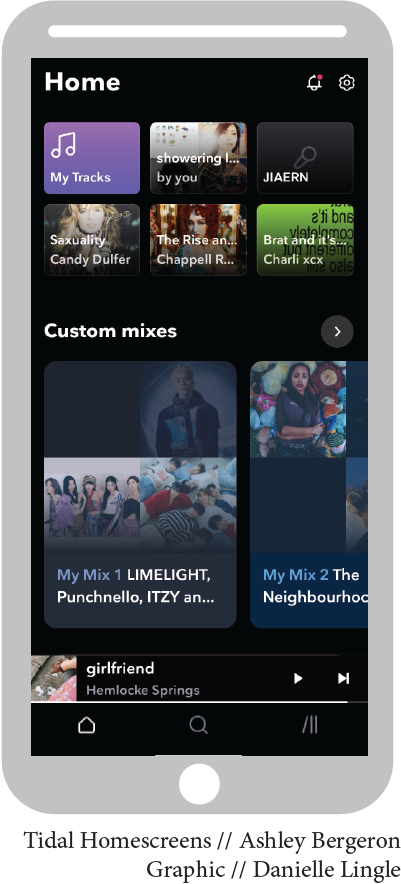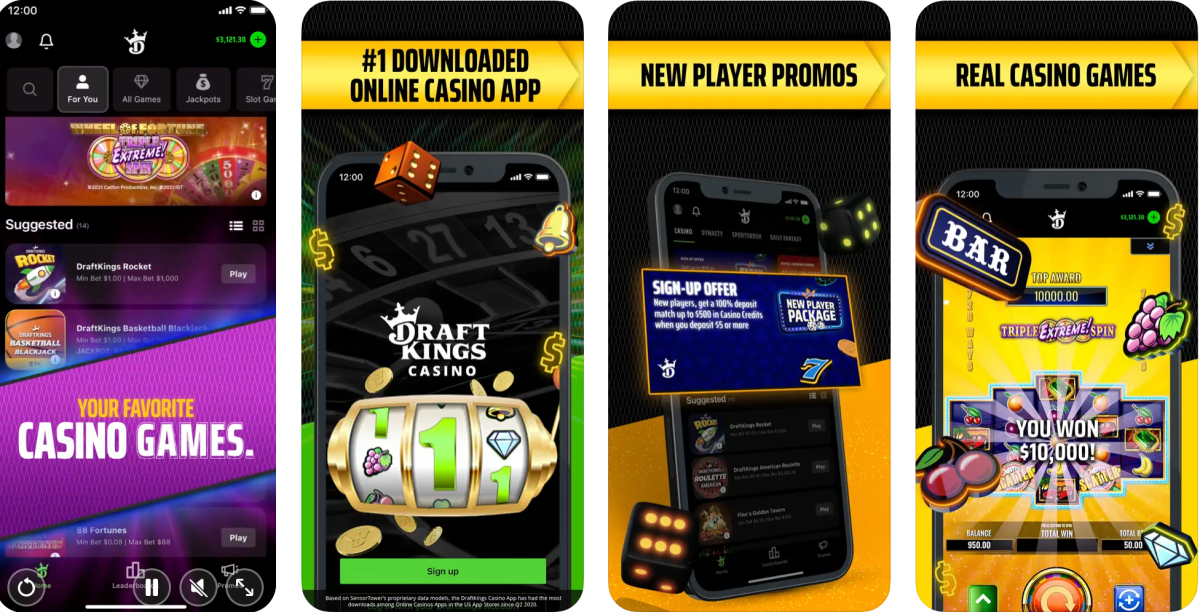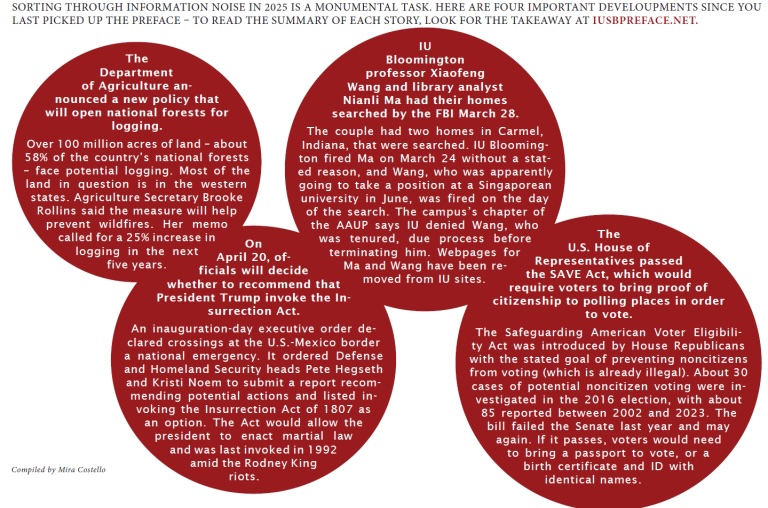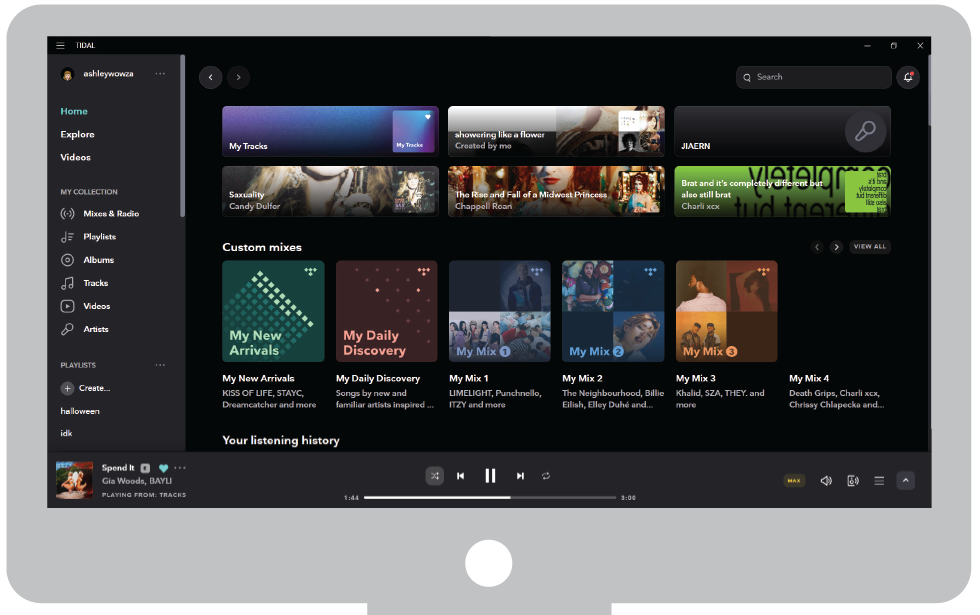Tidal Homescreens // Ashley Bergeron
Graphic // Danielle Lingle
The user interface of Tidal, pictured above, is very similar to Spotify.
By: Ashley Bergeron
Staff-Writer
Just like pretty much every other college student, I like to listen to music while doing schoolwork and other activities. I have been using Spotify for years, and this year, I decided to try a new streaming service: Tidal.
There is discourse online about how much artists make per stream on music streaming platforms. According to Groover Blog, this is how much artists get paid on average per stream:
- Pandora: $0.00133
- YouTube Music: $0.00069
- Deezer: $0.0064
- Qobuz: $0.043
- Amazon Music: $0.004-$0.005
- Spotify: $0.003-$0.005
- Apple Music: $0.007-$0.01
- SoundCloud: N/A
- Tidal: $0.012-$0.015
Out of these, Apple Music and Tidal pay their artists the most per stream, which is something I wanted to support. I’m an android user, so Apple Music was out of the question, leaving me with Tidal.
When I had Spotify Premium, I was paying the student rate of $5.99. Right now, using my student discount, I’m paying $5.49 for Tidal. It is only a 50 cents difference, but those 50 cents can add up. Unfortunately, there isn’t a free option, so if you can’t afford a music subscription, Tidal is out of the running.
While I don’t use Spotify for music that much anymore, I still use it for podcasts, which I can still download using the free version. On Premium, I still got ads on podcasts, so there isn’t much of a difference between Premium and free for podcasts.
Tidal doesn’t have podcasts, but they have music videos, which I find interesting. I haven’t watched any of them yet, but according to the thumbnails, they are the exact music videos uploaded to YouTube.
On Tidal, you can choose the music quality of the songs you’re listening to. The modes they have are Low (balance audio quality and data consumption), High (16-bit, 44.1 kHz), and Max (Up to 24-bit, 192 kHz). Some songs also have Dolby Atmos, which is surround sound in a three-dimensional space.
I can one hundred percent tell the difference between listening on Tidal versus Spotify. Some of my favorite songs sound better, making it a way to experience them more fully. On the other hand, some songs sounded worse, which sucks. Sometimes, ignorance is bliss.
While Tidal has an extensive song library in most genres, I do wish the song selection was better. There are some songs I love that aren’t on there, especially Jpop and Vocaloid. Some artists are also missing albums on their profiles. For example, Candy Dulfer, a saxophonist, is missing two of her albums released in the 1990s.
Some profiles have songs made by multiple different artists on them, which makes it confusing to understand where the money of my stream is going to. This was something I did notice on Spotify, especially with small, unknown Kpop groups, but I think it’s more prevalent on Tidal.
Something I miss about Spotify is the community aspect of it. It’s harder to find playlists made by other users on Tidal. Sometimes, I want to look up “crunchy” and see what playlists people have made with that word. I hope the community aspect of Tidal continues to grow better.
Overall, with better sound quality and better returns to artists, I’m happy with my choice to switch over to Tidal and will continue to use it. My username is ashleywowza if anyone wants to see what playlists I have made!

















